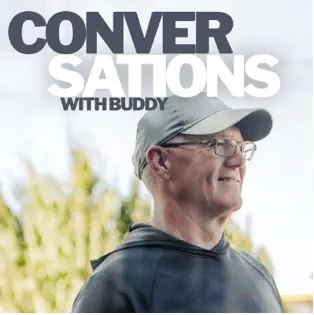4/10/2020
Today a Marion County Grand Jury unanimously found that Oregon State Police Trooper Sherron DeBerry, Trooper Caleb Yoder and Recruit Trooper Joshua Buckles were justified in use of deadly physical force on William Patrick Floyd, 51, on March 26, 2020.
The Grand Jury convened today to hear testimony from 6 witnesses, including officers from the Salem Police Department who led the investigation. The Grand Jury also and reviewed video and audio recordings from police sources, as well as photographs, scene diagrams, dispatch recordings, firearms, and autopsy results.
The following is a factual summary of evidence found by the Grand Jury:
On March 26, 2020, 911 dispatch received a call about a potential road rage incident on Interstate 5 southbound, near Keizer, OR. The caller described that an older-style van with a spare tire and ladder attached to the back was driving aggressively and throwing objects out the window.
Trooper Yoder responded to the call in a marked patrol vehicle, leaving from Oregon State Police headquarters located at 3565 Trestad Avenue SE. He quickly located the van and followed it. He observed the van swerve within its lane and cross over a white line, so he initiated a standard traffic stop by turning on his overhead lights.
The vehicle continued for a short distance at a normal speed. Suddenly the vehicle pulled to the west side shoulder and stopped south of the Delaney Road southbound onramp, near milepost 248.
As Trooper Yoder approached the passenger side of the van he saw that the van’s rear windows had curtains drawn, blocking any view in to the back of the vehicle. When he arrived at the passenger window, Trooper Yoder saw a single male driver. The passenger seat was empty.
Trooper Yoder immediately also saw a black semi-automatic handgun on the center console area, approximately 6 inches from the driver. The gun was unholstered and on its side as if placed by a right-handed person. The fact that the gun was visible, within close proximity of the driver, and unholstered where it could easily slide or fall to the floor boards was concerning to Trooper Yoder.
Trooper Yoder first told the driver, later identified as William Patrick Floyd, that the conversation was being recorded and why he stopped him. He then told Floyd “I see that you’ve got a gun right there. Don’t reach for it. And don’t touch it. Just go ahead and keep your hands on the steering wheel.” A few moments later, he again reminded Floyd to keep his hands on the wheel. Trooper Yoder specifically told Floyd to provide his license and registration, but “don’t touch the gun, or I’ll shoot you.”
Despite the distance between himself and Floyd, Trooper Yoder noticed that the driver smelled of alcohol. He also noticed that Floyd appeared lethargic and possibly intoxicated. During their brief conversation Floyd had to be reminded several times to keep his hands on the steering wheel. Trooper Yoder described Floyd as not quite confrontational, but not friendly either. Based on the circumstances, Trooper Yoder called for backup troopers to respond.[1]
The first troopers to arrive were Trooper DeBerry and recruit Trooper Buckles.[2] Recruit Trooper Buckles approached the passenger side of the vehicle where Trooper Yoder was continuing his traffic stop with Floyd.
After seeing the firearm next to the driver, recruit Trooper Buckles asked Trooper DeBerry to approach the van as well.
At approximately that same time, Trooper Iacob also arrived and approached the van. He attempted to look in the back of the van, but was unable to see anything due to the drawn curtains. Trooper Iacob approached the driver side of the vehicle as Trooper Yoder, recruit Trooper Buckles and Trooper DeBerry remained at the passenger side.
Trooper Yoder used his flashlight to illuminate the gun in the van, and told the others that he had told the driver to keep his hands on the wheel “about five times, and he’s not doing what I’m telling him to.”
While the other troopers stayed with Floyd, Trooper Yoder walked back behind the van to complete his investigation and traffic stop. Trooper Iacob, from the driver’s side, took over speaking with Floyd.
Trooper Iacob described Floyd as staring straight ahead and clenching the steering wheel to the point that Floyd’s knuckles were white. To Trooper Iacob, Floyd appeared very nervous, although he complied when asked to turn off the vehicle and open the driver side door.[3]
Trooper Iacob also noticed a strong odor of alcohol coming from Floyd, and saw that his eyes were glassy, which based on Trooper Iacob’s training can be a sign of intoxication.
When Trooper Iacob asked Floyd where the gun was located, Floyd moved towards the weapon. Trooper Iacob again instructed Floyd to not touch it. Although Floyd initially complied, Floyd moved towards to gun several more times as though he was debating whether to pick it up. This repeated movement eventually caused Trooper Iacob to react by leaning in and grabbing Floyd’s arm.
Trooper Iacob stated that as soon as he touched Floyd, Floyd said “Fuck you,” and Trooper Iacob and Floyd began to struggle. Floyd “switched his whole body,” reached for and picked up the gun. Although Floyd initially dropped the weapon, he was able to pick it up again.
At this point several troopers, including Trooper DeBerry, yelled “Hey! Hey! Hey!” and “Hand off the gun!” There was a momentary lull, and then again “Hand off the gun!” as multiple shots are heard.
Trooper DeBerry fired several rounds at Floyd through the passenger window. Recruit Trooper Buckles dropped back and then also fired several rounds at Floyd through the side window immediately behind the front passenger window.
Trooper Yoder, who was behind the van when the struggle with Floyd began, approached the driver side where Trooper Iacob was still engaged with Floyd. As shots were fired, Trooper Yoder dropped back, tried to get an angle to assist, but was forced to drop back toward his patrol car. Trooper Yoder fired a single shot toward the driver side as he moved backwards towards cover.
Trooper Iacob, who was physically wrestling with Floyd for the gun as shots were fired, retreated from the driver side door area and ran around the front of the van, taking cover in the bushes and scrub on the west side shoulder of I5.
Trooper Iacob did not shoot his firearm during the incident. Despite being physically entangled with Floyd as shots were fired, Trooper Iacob was not shot, although he did sustain minor abrasions and injuries from the retreat.
No other trooper was injured during the incident.
In total, Floyd was shot 16 times in a period of roughly 7 seconds, with entry wounds in his right thigh, right-side torso and right arm.
The entire incident was captured on Trooper Yoder’s patrol car’s dashboard camera (dashcam), which has both audio and video capability.[4] That recording was played for the Grand Jury.
Immediately after the shooting, Troopers worked to safely extract Floyd from the vehicle. They were able to see that Floyd was still moving after the incident; however, due to the curtains covering all the van’s rear windows, they were unable to determine whether Floyd was a continued risk. They were also unable to determine whether additional occupants were in the car.
Troopers called to Floyd to put his hands out the window, but Floyd was either unable or unwilling to do so. They told him that an ambulance was on the way to help him, but Floyd remained unresponsive. In an effort to get a better visual inside the van, Troopers fired several less-than-lethal rounds to break the van’s rear windows. That effort was ineffective, and Troopers remained unable to approach safely.
During this time, other law enforcement responded to the scene, including the Marion County Sheriff’s Office and the Salem Police Department. Eventually, Salem Police deployed their armored vehicle to approach the driver side of the van. Using that vehicle as cover, officers were eventually able to remove Floyd from the van. Police immediately rendered medical aid, however Floyd was pronounced deceased at the scene.
Pursuant to Marion County protocol for officer use of deadly force investigations, an investigation was conducted by an outside agency, the Salem Police Department.
During their investigation at the scene, Salem Police could see a black semi-automatic pistol on the driver’s seat of the van, which had moved during the incident from the center console area.
Pursuant to a search warrant, Salem Police discovered that the gun was loaded, with a bullet in the chamber and three rounds missing from the magazine.
Upon searching the interior of the van pursuant to a search warrant, investigators located several spent casings matching the ammunition in Floyd’s weapon on the driver and front passenger floor boards. Investigators were ultimately unable to determine from the scene whether Floyd shot the weapon during this incident.[5]
Deputy Medical Examiner Dr. Rebecca Millius conducted an autopsy on William Patrick Floyd on Friday, March 27, 2020. She determined that the cause of death was “multiple gunshot wounds of torso.” Final toxicology results remain pending.
The Grand Jury applied the facts of this case to the legal principles dictating circumstances when deadly physical force can be used. Specifically, the Grand Jury found that the officers reasonably believed one of the following:
- William Patrick Floyd had committed and/or attempted to commit a felony involving the use or threatened use of physical force against a person; [6]
- Deadly physical force was necessary to defend a peace officer or another person from the use or threatened imminent use of deadly physical force;
- Under the totality of the circumstances existing at the time and place, the use of such force was justified, and;
- The officers’ lives or personal safety was endangered in the particular circumstances involved.
The Grand Jury’s decision required reviewing all the facts and evidence available and applying them to the legal principles above.
The Grand Jury unanimously concluded that the actions of Trooper Yoder, Trooper DeBerry and recruit Trooper Buckles were justified and lawful.
District Attorney Paige Clarkson stated, “”The Grand Jury engaged in a very thorough and thoughtful review of this incident. Their service in such an important case is truly essential to ensure transparency and maintain confidence in our law enforcement officers. But it was especially remarkable today given the public health crisis surrounding our community. We further extend our thanks to the Salem Police Department for their dedication to this investigation and to our Marion County process as they skillfully carried out their duties within our Use of Force protocol. This case highlights the very dangerous work our police officers engage in every day. I am proud of the work that they do in placing their lives on the line to protect our community and am thankful that these Troopers all returned home to their families that night.”
The dashcam video and audio from this incident can be located here: https://drive.google.com/file/d/1lo3OgjP2zaFugE3ubTyaK2A6jFOU7cVv/view?usp=sharing
——————————————————
[1] Floyd was in lawful possession of the firearm and had a valid Oregon concealed weapons permit. [2] Trooper DeBerry was recruit Trooper Buckles’ field training officer, or “FTO.” [3] Trooper Iacob had Floyd open the driver-side door because the window did not roll down. [4] Recruit Trooper Buckles’ dashcam was also recording video, but only shows Trooper Yoder’s vehicle’s flashing blue lights. Trooper DeBerry’s microphone was not on as he rode in Recruit Trooper Buckles’ vehicle. Trooper Iacob also had a dashcam recording, but again only shows another patrol vehicle with flashing lights and his audio was not activated. In short, the only video that was able to capture any of the incident was Trooper Yoder’s dashcam. [5] Floyd’s weapon used ammunition distinct from the each Troopers’ firearm. Furthermore, there were more than three spent casings located in the same general area of the van. [6] A felony crime is any crime that has a potential sentence of more than one year in prison. The most applicable felony applied to this circumstance is Unlawful Use of a Weapon with a Firearm, ORS 166.220, which states that: “A person commits the crime of unlawful use of a weapon if the person: (a) Attempts to use unlawfully against another, or carries or possesses with intent to use unlawfully against another, a dangerous or deadly weapon.” Unlawful Use of a Weapon is a level “C” felony.











